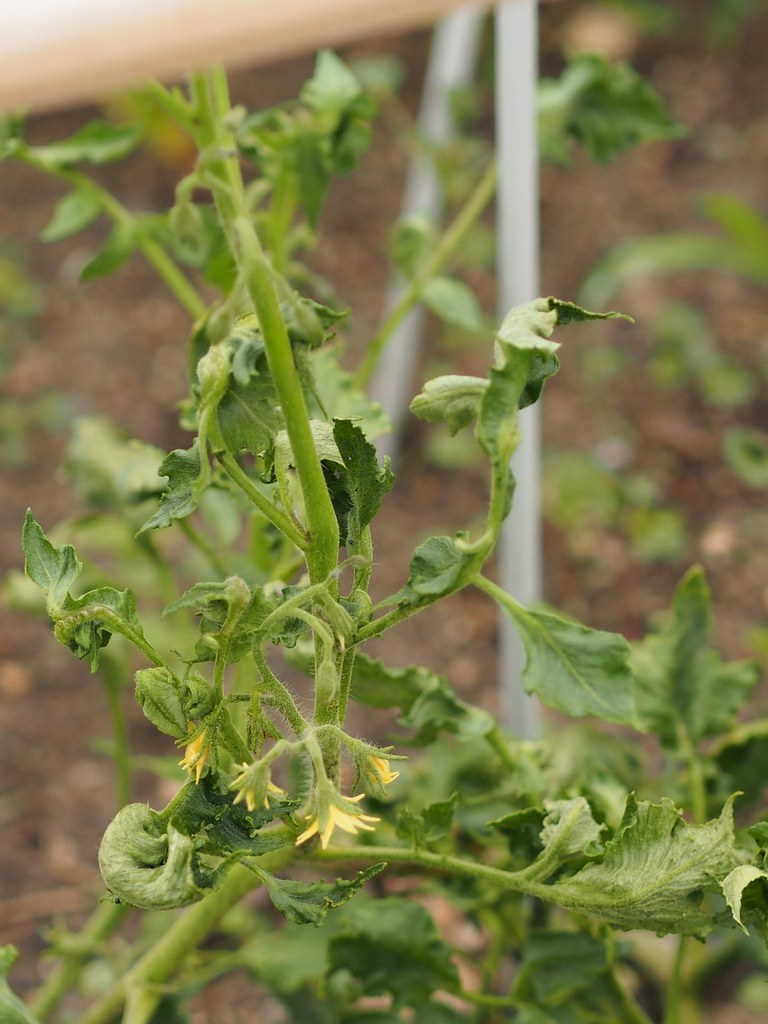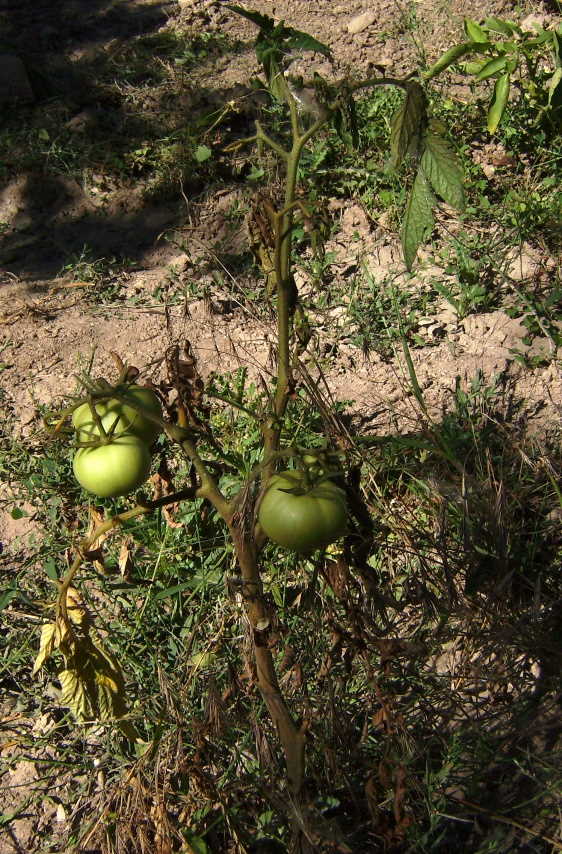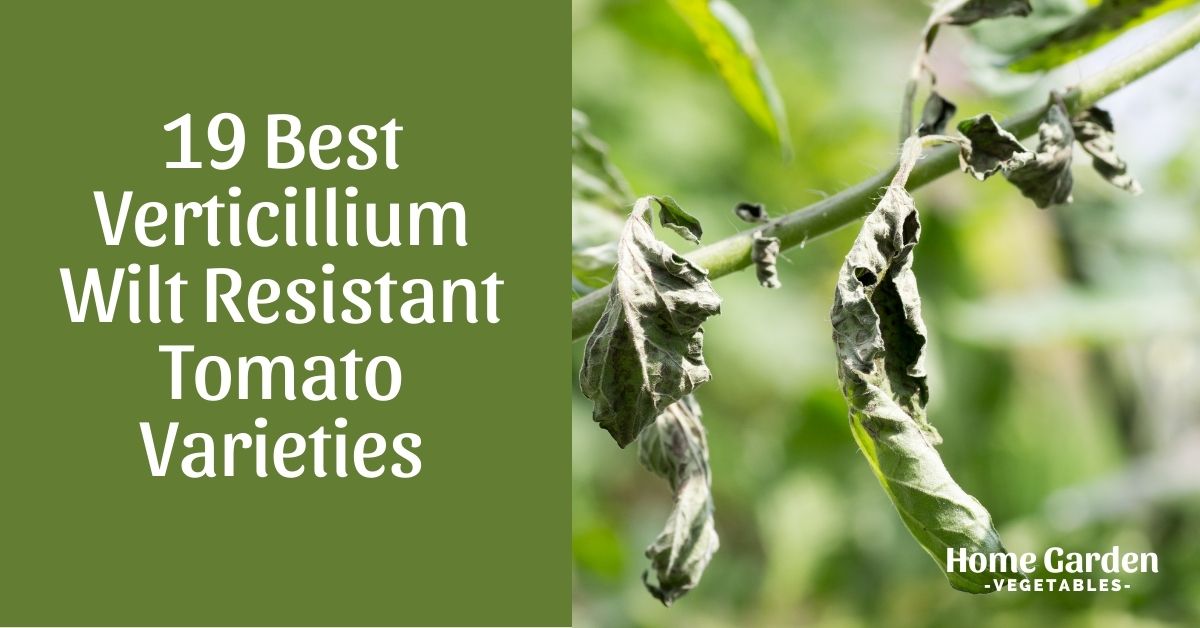Verticillium wilt is among the most damaging and widespread problems tomato growers often come across. It’s a soil-borne disease that affects a large number of woody and herbaceous plants. Besides tomatoes, many food crops fall prey to this fungal disease, including potatoes, eggplant, strawberries, and black raspberries.
What is Verticillium wilt, and how does it affect the tomato plants? Is there any way to revive the plants once they’re infected? Is there any way to avoid it? What are the best Verticillium wilt resistant tomato varieties to grow so you can prevent the problem in the first place? Continue reading, and you’ll find the answer to all your questions.
Reader Poll: What online courses would interest you?

What Is Verticillium Wilt?
Verticillium wilt is a wilt disease that affects over 350 plant species around the globe. There isn’t a single fungus responsible for the problem. Rather, Verticillium wilt can be caused by either one of the 6 species of Verticillium fungi.
Any of these 6 Verticillium fungi may be responsible for Verticillium wilt:
- V. dahliae
- V. albo-atrum
- V. longisporum
- V. nubilum
- V. theobromae
- V. tricorpus
It’s a soil-borne pathogen that attacks many important crops, including vegetables, fruits, and ornamentals. The fungi invade through the plants’ roots, inhibiting the water and mineral uptake of the plants. When the plants are deprived of their essential nutrients, the development will suffer.
Subscribe to our newsletter!
Lifecycle Of Verticillium Wilt
Verticillium fungi thrive in cool (55 to 75°F), moist weather that usually occurs in spring. However, to worsen the situation, you won’t see the symptoms until it’s sunny and warm in the summers because that’s when the plants will be under stress.
A severely infected plant will also be vulnerable to other problems, resulting in the plant’s death in rare cases. When the plant dies, the Verticillium fungi release survival structures into the environment where the dead plant falls.
Unless the plant is correctly disposed of and the surrounding area is disinfected, the fungi’s survival structures will stay alive in the soil, waiting for a new host plant to grow in the nearby area. Once it finds a plant to feed on, it thrives, and the cycle continues.
What Are The Symptoms?

Symptoms of verticillium wilt on tomatoes begin with yellow blotches on the older leaves. As the disease progresses, you’ll find brown veins and curling up of leaf margins. The new growth on the top of the plant stays green. The infected plants will show stunted growth and produce very few small fruits if they do manage to develop. The fruits may even develop yellow shoulders or experience sunscald because of the loss of leaves.
The fungi rapidly spread through the plant’s xylem, inhibiting the plant’s water and nutrient transport. If you cut open a stem from the base of one of the infected plants, you’ll see a brown or black discoloration in the water-conducting tissues.
Different from fusarium wilt, tomato plants infected with Verticillium wilt will only show discoloration in the main stem to about 10 to 12 inches from the soil level. Even so, the toxins from the fungi can easily propagate much further up the plant. In fusarium wilt, the discoloration can be examined even further up the soil.
How To Prevent Verticillium Wilt In Tomatoes?
Though Verticillium wilt rarely kills the plant, it will inhibit their growth and severely affect yield. Unfortunately, there aren’t any fungicides that can treat Verticillium wilt in tomatoes or any other plant for that matter. Prevention is the only way in which you can avoid the disease from occurring in the first place.
Here are some effective preventions for tomato plants against Verticillium wilt:
- Long crop rotations (4 to 5 years) with non-susceptible varieties can help free the soil of the pathogen. During the off years, planting grains, corn, or cover crops are a good idea to keep the fungi at bay.
- Remove the infected plants and destroy them a reasonable distance away from the productive land. Never compost or transplant the infected plants since there are high chances of spreading the disease.
- Many weeds are also ideal hosts for Verticillium fungi. Controlling weeds can also help prevent the disease in tomato plants.
- Sanitize the gardening equipment once you’ve handled infected plants of infected soil with them. This will help prevent the spread of the disease.
- The best prevention is to plant Verticillium wilt resistant tomato varieties. The cultivars that are resistant to this disease will have the letter ‘V’ printed in front of their name.
Verticillium Wilt Resistant Tomato Varieties
By far, the most effective and economical method to save your tomato crops against Verticillium wilt is to plant Verticillium wilt resistant tomato varieties. By preventing the problem from occurring in the first place, you won’t just save your tomato yield but will also prevent the soil from being affected, thus saving your future crops as well.
Here are some of the most popular Verticillium wilt resistant tomato varieties preferred by gardeners:
- New Yorker (V)
- Springset
- Pic Red
- Royal Flush
- Gardener (V)
- Fireball (V)
- Big Girl
- Beefmaster
- Better Boy
- Terrific
- Jumbo
- Wonder Boy
- Small Fry
- Setmore
- Spring Giant
- Ultra Boy
- Ultra Girl
- Campbell 17
- Jetfire
Conclusion
Verticillium wilt is a common concern of tomato gardeners. Make sure you plant one of the Verticillium wilt resistant tomato varieties and follow all the prevention steps to protecting your garden from becoming a target of Verticillium fungi. Once it finds its way into the soil, it will spread quickly through the crops destroying what could have been a perfect harvest. Make sure your tomatoes don’t fall prey to Verticillium wilt.

